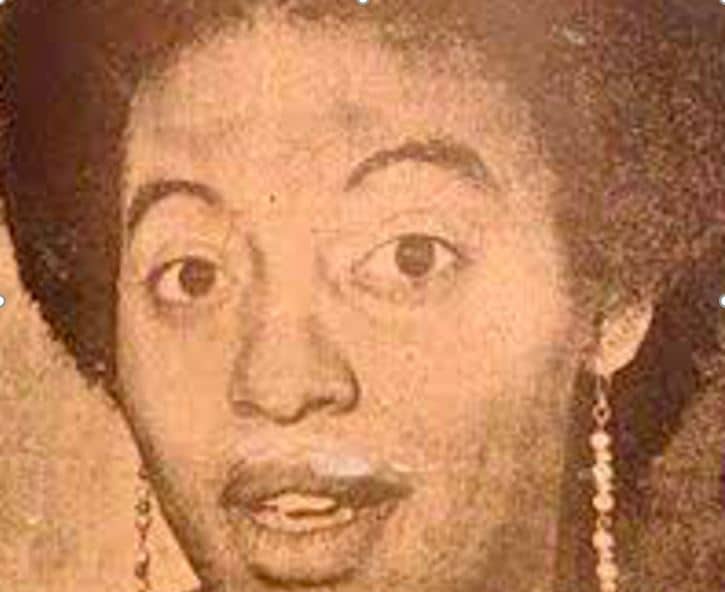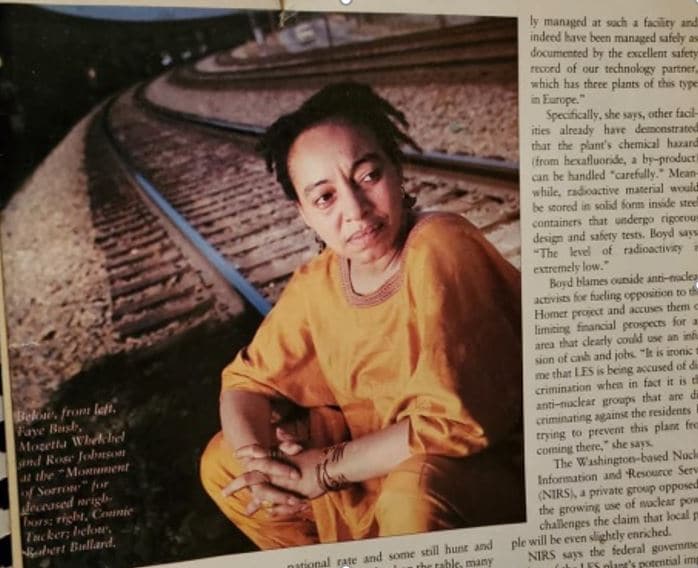Connie Tucker Remembered

Connie Tucker (October 14, 1950 – September 26, 2015) was born in Seale, Alabama to parents Otis Spencer Jr. and Bernice Nall Tucker. Although a native of Alabama, she grew up in Tuskegee, Alabama and Sarasota, Florida. Connie attended Booker High School (Sarasota); the University of South Florida (Tampa). She became an activist for social justice in the late 1960s and 1970s as one of the young leaders of the Black Liberation Movement. She co-founded Black Youth For Peace and Power in Sarasota which spiraled into other forms of activism with other groups.
She was also co-founder of The Burning Spear Newspaper and served as Chair of the African People’s Socialist Party, also referred to as The Uhuru Movement. During that time, she became one of the iconic and first modern day political prisoners at the tender age of twenty and was released through a national Free Connie Tucker Campaign. Her legal case was supported and financed by Ann Braden (SCEJ). Through the Uhuru Movement platform to Free Connie, other’s joined in organizing to free her as well, including SCLC, SNCC, and AAPRP. James Orange organized a march from one side of Florida to the other.
In the 1980s, Connie lived and worked for the United States Agency for International Development and the University of Wisconsin in The Gambia, West Africa. Returning to the USA in the late 1980s, she became Project Coordinator for the 21st Century Youth Leadership Training Project in Selma, Alabama and played a major role in the Selma Movement Against Racial Tracking to end miseducation and tracking in the schools. In 1992, she worked as coordinator of the Southern Organizing Committee for Economic and Social Justice organizing its South-wide Environmental Justice Project.
Connie was key to this historic regional conference in New Orleans, the largest diverse environmental justice conference to date. In May 1993, she became the Executive Director for SOC and grew its Environmental Justice (EJ) network to one of the largest grassroots efforts in the United States, which worked across eight states in the U.S. EPA’s region IV. From this work, the National Environmental Justice Council (NEJAC) and the Clinton Environmental Justice Executive Order were established. Connie co-founded the National Voting Rights Museum & Institute and the Bridge Crossing Jubilee (which commemorates Bloody Sunday and the Selma to Montgomery March).

She wrote many articles and books on the Civil Rights Movement as well as the Environmental Justice Movement. Connie’s last works before she died covered the 50th Anniversary of the Selma to Montgomery March, the white supremacy of Nathan B. Forrest supporters, and the removal of racist statues in Selma. A Pan-Africanist at heart, Connie Tucker is buried in the village of Juffureh in The Gambia, West Africa. Juffureh is where Kunta Kinteh was stolen and taken on slave ships to America, as told in Alex Haley’s Roots. Connie dearly loved her family, sisters, and daughters Olimatta Taal and Maiyai Taal Hocheimy. She cherished young people including her grandchildren, many nieces, nephews, and the children of the community, which she treated as her own. We will miss her strength, love, activism, and courage.
This remembrance was written Olimatta Taal of the Connie Tucker Legacy Foundation as part of the 30th anniversary celebration of the First National People of Color Environmental Leadership Summit of which Connie Tucker was a part.
Related News
Joy, Love, and Climate Action: A Church Draws from Ayana Elizabeth Johnson
At First Congregational Church, UCC, in Colorado Springs, CO, our Climate Justice Leadership...
Read MoreVote for Climate Hope Congregation Toolkit
After having witnessed the wonderful Climate Hope art of UCC children and youth, we are now...
Read MoreHope Community Solar Project
The Environmental Action Team (EAT) of Presbyterian-United Church of Christ (PUCC) in Saratoga...
Read More

